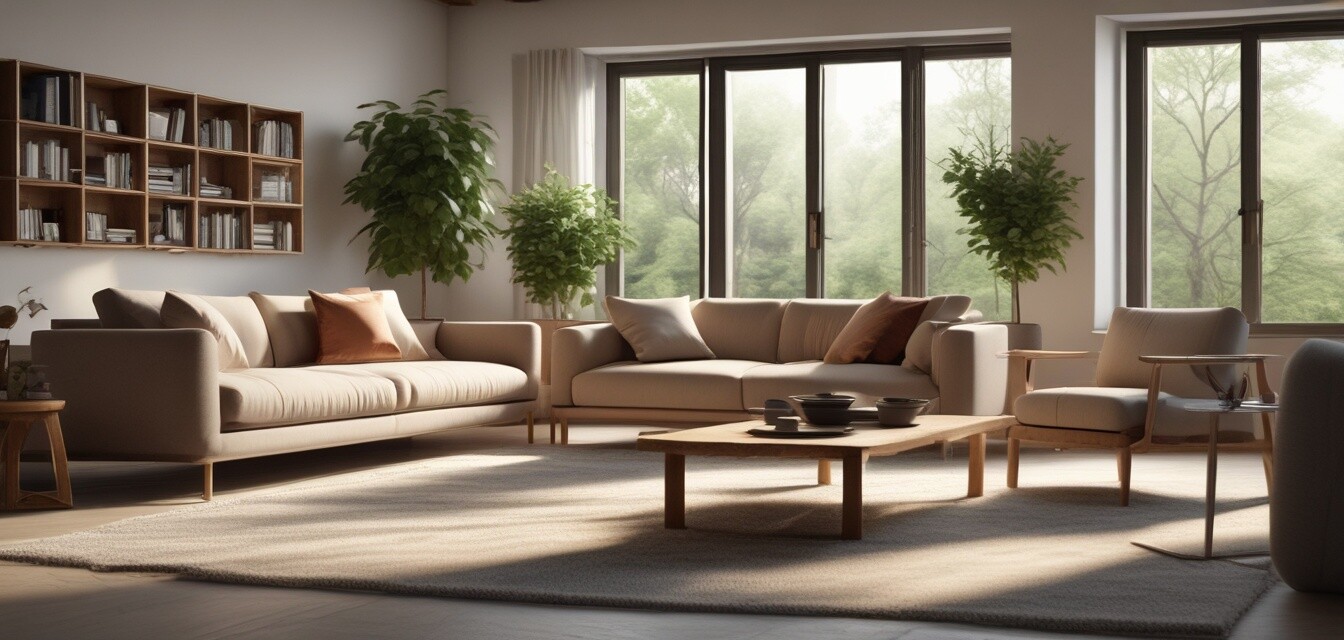
How lifestyle changes influence sustainable furniture trends
Key Takeaways
- Remote work is driving demand for multifunctional furniture.
- Simplicity and minimalism shape modern design trends.
- Eco-conscious consumers prioritize sustainable materials.
- Technology integration is becoming essential in furniture design.
- Global trends influence local markets, adapting to consumer needs.
In these times of rapid change, the way we live and work is evolving, leading to a significant transformation in furniture design. From the rise of remote work to the minimalist movement, our lifestyles are shaping the way we think about eco-friendly and sustainable furniture.
The impact of remote work
With more people working from home, there’s an increasing demand for furniture that caters to home office needs without compromising on style or sustainability. Below are key features that home office furniture must embody:
- Durability: Furniture that can withstand daily use is essential.
- Functionality: Pieces that can serve multiple purposes are preferred.
- Ergonomics: Essential for comfort during long working hours.
Multifunctional designs
As home offices merge with living spaces, multifunctional design is on the rise. Consumers are seeking out furniture that is adaptable, such as:
- Desks that can convert into dining tables.
- Storage ottomans that provide seating and space for supplies.
- Wall-mounted desks that fold away when not in use.
Minimalism and simplicity
The minimalist movement advocates for simplicity and efficiency, influencing many homeowners to seek out clean, uncomplicated designs. Key principles of minimalist furniture include:
- The use of fewer materials, promoting sustainability.
- Simple shapes and forms, enhancing visual clarity.
- Neutral color palettes that appeal to a wide audience.
Benefits of minimalism in sustainable furniture
Minimalism contributes to sustainability by reducing resource use. Here's how:
| Aspect | Impact on Sustainability |
|---|---|
| Material Usage | Less material means reduced waste. |
| Production Processes | Streamlined processes lead to lower emissions. |
| Consumer Mindset | Focus on quality over quantity promotes longer lifespans for products. |
Eco-conscious consumers
As awareness about environmental issues grows, more consumers are prioritizing eco-friendly choices. Key trends in this market include:
- Reclaimed wood and recycled materials in furniture creation.
- Wood sourced from sustainable forests.
- Non-toxic finishes and natural paints for safety.
The rise of ethical brands
Many brands now emphasize ethical practices and transparency in sourcing and production. Shoppers are becoming more vocal about their preferences for:
- Brands that uphold fair labor standards.
- Transparency in material sourcing.
- Commitments to reducing carbon footprints.
Technology and furniture design
Technology is playing a major role in modern furniture design, influencing how people interact with their furniture. Key technological advancements include:
- Smart furniture that integrates digital features.
- Adjustable pieces that utilize mechanics for improved ergonomics.
- 3D printing for custom designs and sustainable practices.
Smart home integration
With the rise of smart homes, consumers are looking for furniture that can connect and enhance their lifestyle. Here's how:
| Type | Feature | Benefit |
|---|---|---|
| Smart desks | Height-adjustable with memory settings | Customized comfort for individual users. |
| Media centers | Integrated wireless charging | Reduced clutter and enhanced convenience. |
| Lighting solutions | App-controlled ambient lighting | Improves mood and focus for better productivity. |
Conclusion
Lifestyle changes are significantly influencing sustainable furniture trends. As the demand for multifunctional, minimalist, and eco-friendly furniture rises, manufacturers are adapting to these new consumer needs. By understanding these trends, homeowners can make informed decisions that blend style and sustainability.
Tips for choosing sustainable furniture
- Look for certifications like FSC or EPA to ensure materials are sustainably sourced.
- Prioritize quality – well-made pieces last longer and reduce waste.
- Consider second-hand furniture – it’s eco-friendly and often unique.
- Evaluate the life-cycle of the furniture – think about eventual disposal and recyclability.
Pros
- Supports sustainable practices and reduces environmental impact.
- Promotes a clean, organized living environment.
- Offers multifunctional use, saving space and cost.
- Encourages investment in lasting quality over disposable options.
Cons
- Initial costs may be higher compared to conventional options.
- Availability can be limited depending on the area.
- Some sustainable materials may not have the same finish as traditional ones.
For more information on sustainable choices, check out our comprehensive buying guides and stay informed about the latest in eco-friendly living here.